The cheapest way to insulate a shed involves using affordable, readily available materials. Bubble wrap, a common packing material, can be attached to the walls and roof with staples or adhesive, trapping air pockets to minimize heat loss. Similarly, recycled cardboard or newspapers can be stacked between studs and covered with plywood or drywall.
For the floor, inexpensive rugs or carpet remnants provide insulation and comfort. Ultimately, sealing gaps and cracks with caulk or weather-stripping further enhances insulation, making your shed energy-efficient without breaking the bank. I have listed all the cheap ways to insulate a shed below.
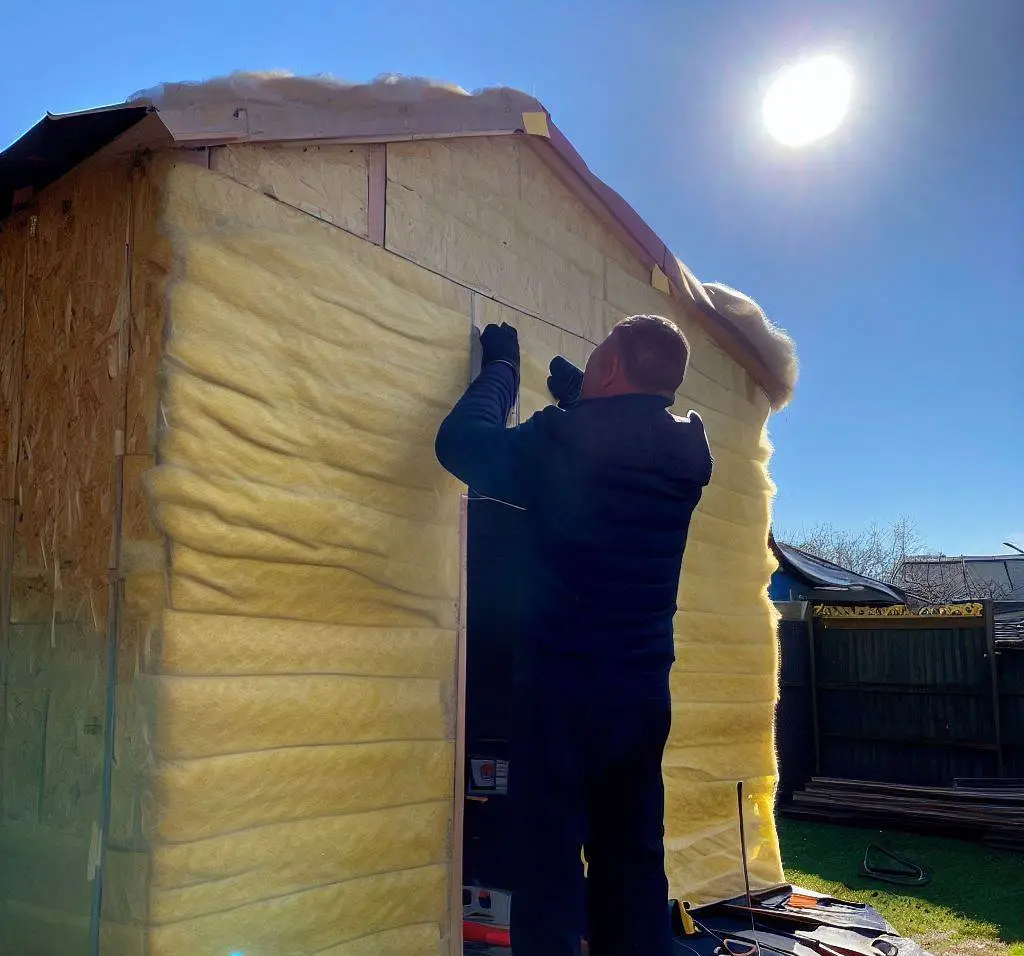
Cheap Ways to Insulate a Shed
Insulation is a material that helps keep heat in or out of a building. It’s used to reduce energy transfer through walls, floors, and roofs by slowing down air movement within them. Insulating sheds can help keep your tools dry and safe from extreme temperatures and save you money on your utility bills!
1. Bubble Wrap
Bubble wrap is one of the cheapest ways to insulate a shed. It’s also one of the easiest since you can use it right out of the box without any preparation or special tools.
The big advantage of using bubble wrap is that it’s very effective at keeping heat and cold air out. This makes it ideal for small spaces like sheds, where insulation needs to be compact and efficient. The bubbles act like small pockets of air that help keep heat from escaping through cracks or gaps between boards or panels on your shed’s walls and roof (which could otherwise be let in drafts).
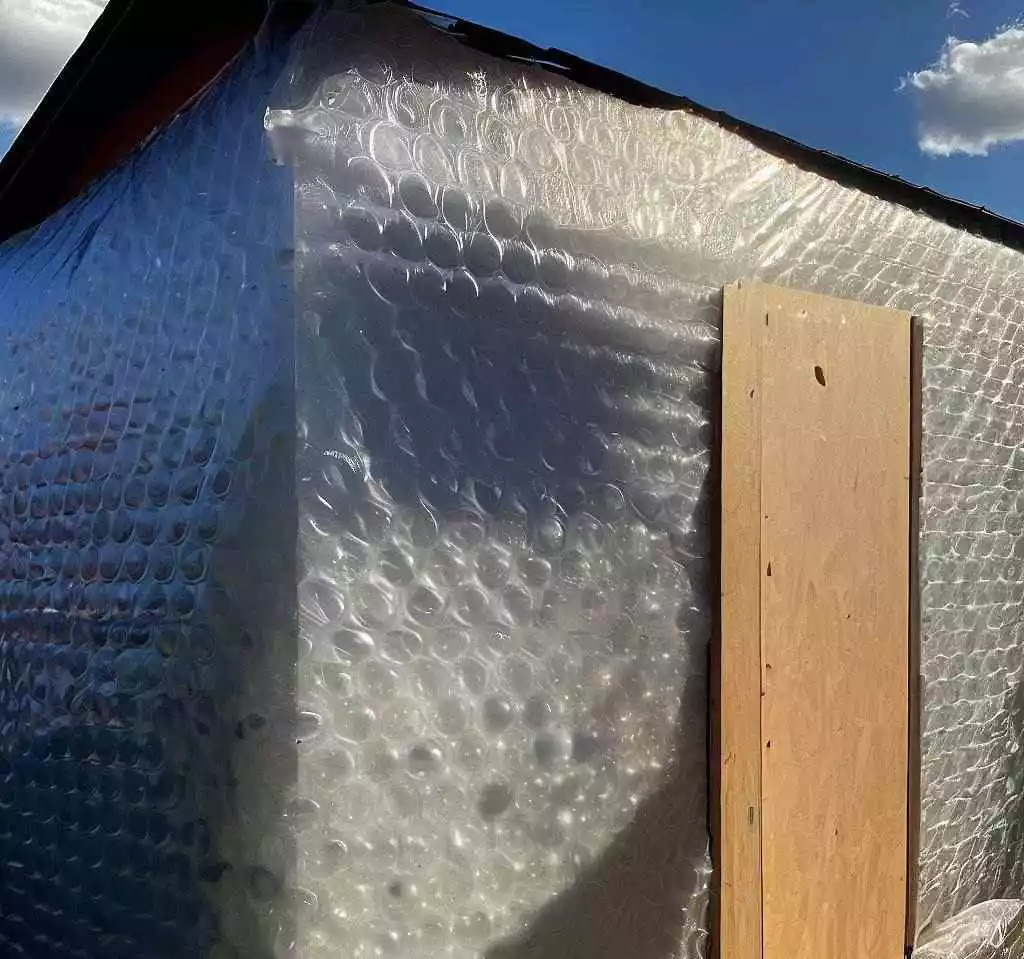
Bubble wrap comes in two different thicknesses: standard and heavy duty (HD). Standard bubble wrap has an R-value* between 1-2 per inch; HD has an R-value between 2-3 per inch–so if you’re looking for maximum efficiency, go with HD! But remember: no matter what kind of bubble wrap you choose–standard or heavy duty–you’ll need several layers before seeing any real results when insulating your shed with this material alone; otherwise, there won’t be enough “pockets” within each layer for them all to do their job properly.”
2. Insulation Roll
Insulation rolls are a great option for insulating your shed. They’re easy to install, and they provide good insulation for the price.
The main disadvantage of insulation rolls is that they can be difficult to cut into smaller pieces if you need them cut down. You may also have trouble finding an exact match in color if you want something other than white or gray (the most common colors).
If you’re using this method, make sure that the roll is long enough so that you don’t have any bare spots on your walls when it’s installed–you’ll want at least 1 foot of overlap per side of your shed!
3. Expanded Polystyrene
Expanded polystyrene is a great way to insulate a shed but it has some downsides.
Expanded polystyrene (EPS) is the most affordable option for insulating your shed. You can find it at home improvement stores like Lowe’s or Home Depot and usually buy it in sheets 4 feet by 8 feet long and 1 inch thick. The sheets come in different colors, so you can paint them to match your shed’s color scheme or make it blend into its environment better!
The main drawback of expanded polystyrene is that it doesn’t hold up well against moisture–it will absorb water from rain or snow very easily if you don’t cover it with something else first. To prevent this problem from happening when using EPS as an insulator for your storage unit, make sure there isn’t any other material touching the outside surface of any wall before applying this type of insulation material onto them; otherwise, they’ll start rotting away pretty quickly!
4. Rigid Insulation Board
A rigid insulation board is a great option for insulating your shed. It’s easy to install and can be cut to fit any shed size, but it has some drawbacks.
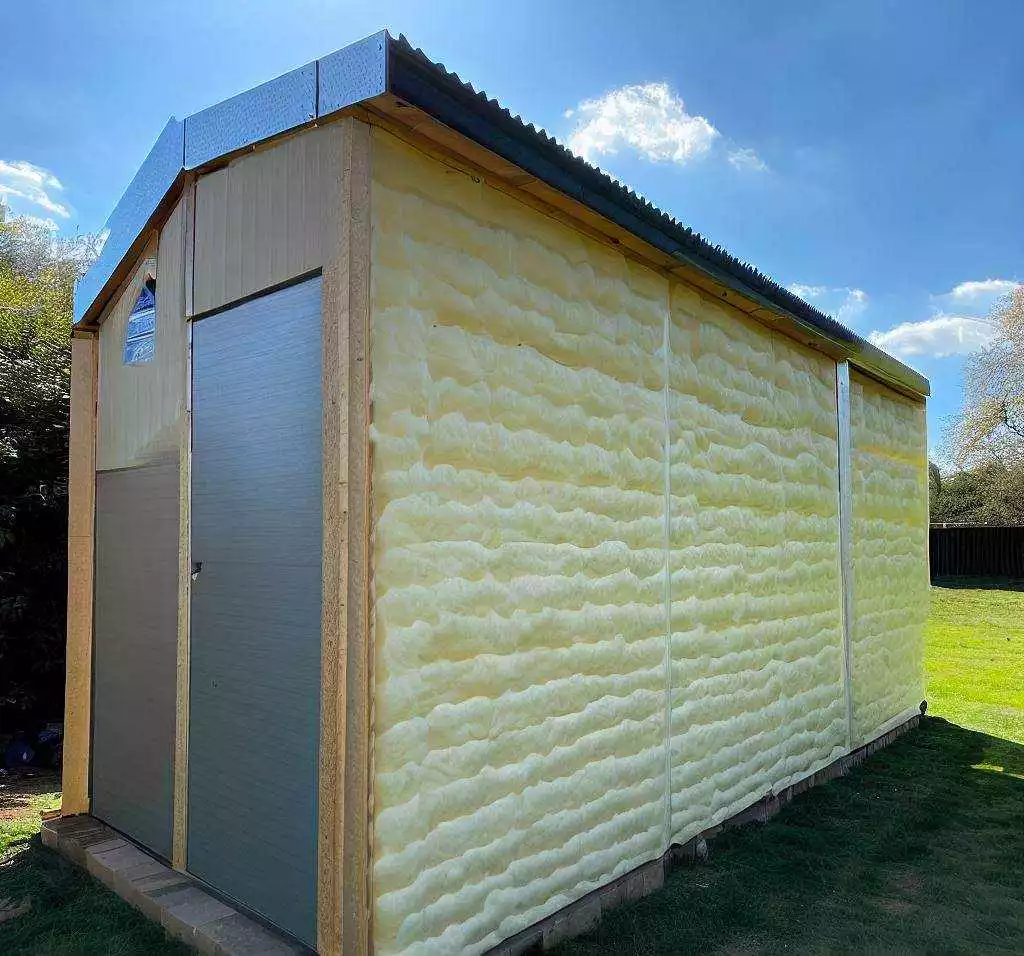
First, rigid insulation board is more expensive than other insulation materials.
Second, it will only work with sheds with metal roofs; if you want to use a rigid insulation board on your wood-framed shed, you’ll need to add an additional layer of plywood over the top of your existing roof before installing the rigid insulation board.
Finally (and most importantly), since the rigid insulation board is so thick (about 1/2 inch), there isn’t much room between each layer when installing them. You may need multiple sheets depending on how big or small your shed is!
5. Cellulose
Cellulose insulation is made from recycled paper products and is an eco-friendly option. It can be blown into cavities or applied as a loose-fill material. The dense cellulose packing provides an effective barrier against heat loss and air infiltration. It is also fire-resistant and pest-resistant. A DIY enthusiast can easily install cellulose insulation, making it a budget-friendly option for insulating your shed.
6. Sprayed Foam
Sprayed foam insulation is another cost-effective method for insulating a shed. It consists of two components that, when combined, expand and harden to create an insulating barrier. Sprayed foam fills gaps and voids, providing excellent thermal and air-sealing properties. While it can be more expensive than cellulose, its performance can offset the initial investment in the long run. Applying sprayed foam insulation can be manageable for those with some experience in DIY projects, further reducing costs.
7. Straw
Straw is a natural and sustainable option for insulating a shed. It provides excellent thermal insulation and is an eco-friendly alternative to synthetic materials. Straw bales can be stacked against the shed’s walls, creating a thick insulation layer. Ensure the straw is dry and well-packed to prevent moisture build-up and potential mold growth. Although straw may not be as efficient as cellulose orsprayd foam, it is a low-cost option for those on a tight budget.
How to insulate a shed for free
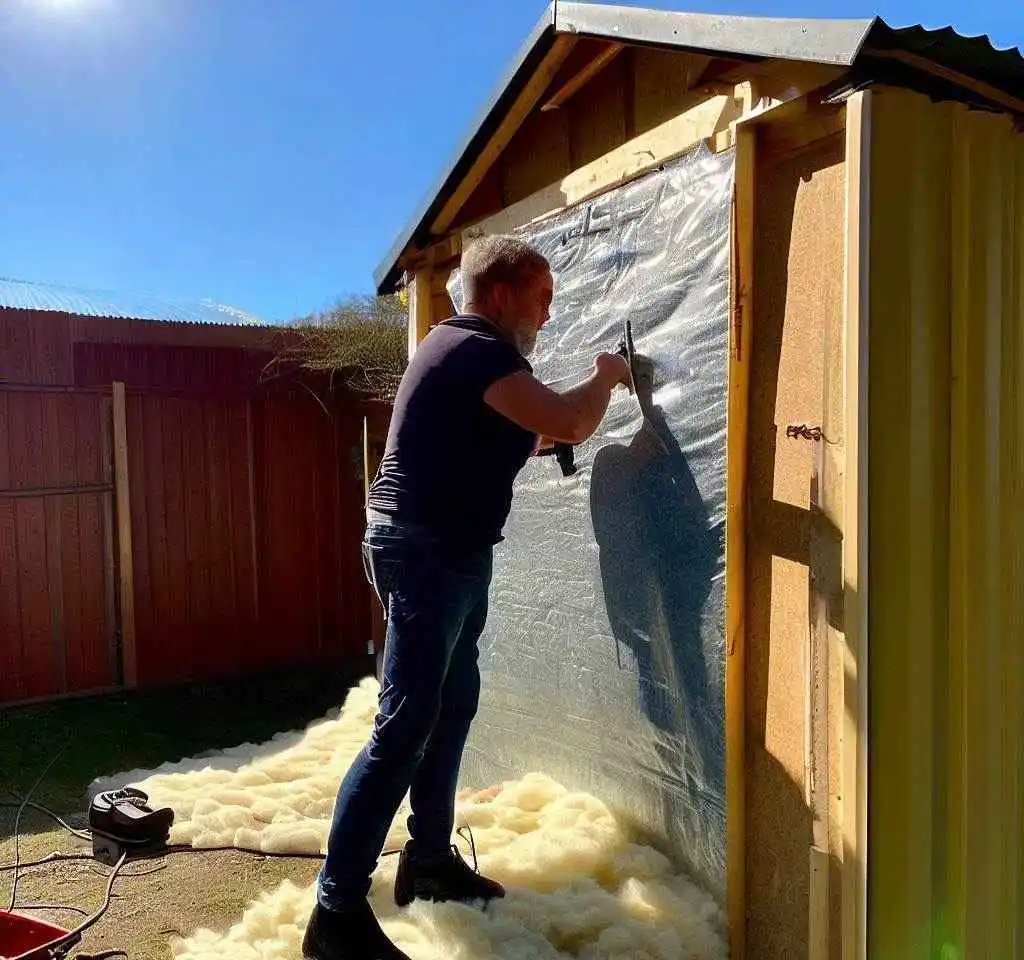
Gather Free Insulation Materials
- Collect discarded bubble wrap or packing materials from friends, family, or local businesses.
- Gather old newspapers, cardboard, or magazines from your home or ask neighbors for their recycling.
- Look for free carpet remnants, old rugs, or unwanted blankets on local classifieds or social media marketplace.
Prepare the Shed
- Clear the shed and sweep the floor, walls, and ceiling to remove dust and debris.
- Remove any damaged or rotten wood and repair or replace it as needed.
- Close gaps and cracks with caulk or weatherstripping to prevent drafts.
Insulate the Walls and Ceiling
- Cut the bubble wrap or cardboard to fit between the studs on the walls and ceiling of your shed.
- Attach the bubble wrap or cardboard to the studs using a staple gun or adhesive. Overlap the seams to create a tight seal.
- If using newspapers or magazines, tightly roll or stack them between the studs and secure them with tape, wire, or string.
Reinforce Insulation
- Cover the walls with a layer of plastic sheeting (available for free from many construction sites) and secure it with staples or nails.
- Add a layer of plywood, drywall, or repurposed wood over the insulation for a finished look.
Insulate the Floor
- Lay down the carpet remnants, old rugs, or blankets to cover the floor.
- Add a layer of plastic sheeting beneath the rugs for moisture protection.
Final Touches
- Replace or upgrade your shed’s door and window seals to reduce drafts.
- Install a simple draft excluder at the base of the door to keep out cold air.
What is the cheapest way to insulate a wooden shed?
The most cost-effective way to insulate a wooden shed involves using easily obtainable, inexpensive materials. Bubble wrap, often used in packaging, can be acquired cheaply or even free from local businesses. Attach it to the walls and ceiling with staples or adhesive, benefiting from its air pockets to reduce heat loss.
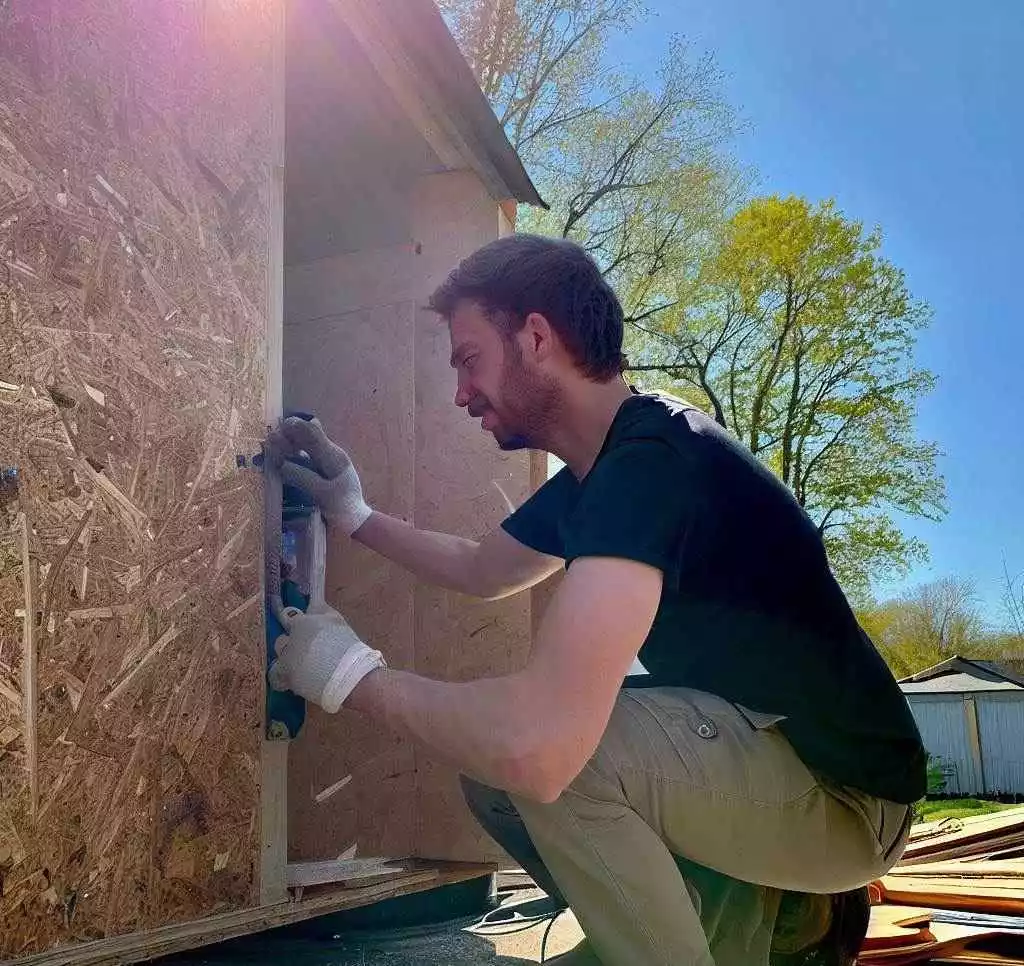
Alternatively, repurpose cardboard or newspapers by fitting them between the studs and covering them with plywood or drywall. Consider using affordable rugs, carpet remnants, or even old blankets for the floor. Identify and seal gaps or cracks with caulk or weatherstripping to further enhance insulation. Utilizing these budget-friendly materials can insulate your wooden shed without spending a fortune, ensuring a comfortable and energy-efficient space.
The cheapest way to insulate a metal shed
Transforming your metal shed into a comfortable, energy-efficient space doesn’t have to break the bank. You can insulate your shed with a few cost-effective strategies and save on energy bills. Here’s how:
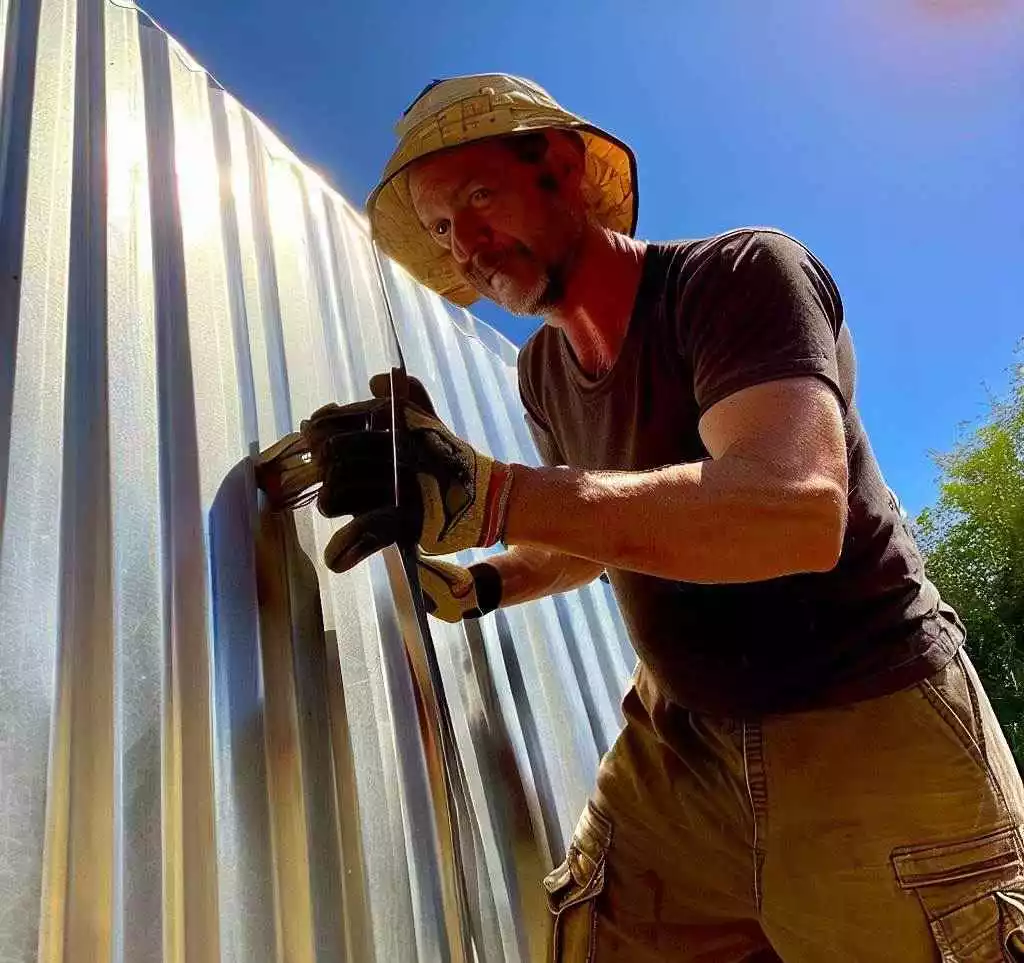
- Bubble Foil Insulation: A popular choice for metal sheds, bubble foil insulation is lightweight, easy to install, and reflects heat effectively. It combines air bubbles and reflective foil layers to create a thermal barrier, keeping your shed cool in the summer and warm in the winter.
- Fiberglass Insulation: Fiberglass insulation is a classic option in rolls or batts. It’s affordable and provides good thermal resistance. Make sure to wear protective gear during installation to avoid skin irritation.
- DIY Cardboard Insulation: Use thick cardboard layered with aluminum foil for an eco-friendly alternative. This combination traps air and reflects heat, providing a low-cost insulation solution.
- Weatherstripping: Seal gaps around doors and windows with weatherstripping to prevent drafts and improve energy efficiency.
You May Also Find Useful: How To Light Up The Backyard Without Electricity? | How To Fix A Muddy Spot In The Yard?
Frequently Asked Questions (FAQs)
What is the best DIY insulation?
Answer: The best DIY insulation depends on your specific needs, but bubble wrap, fiberglass, and spray foam insulation are popular choices. Each offers a balance of affordability, ease of installation, and effectiveness in improving your space’s thermal performance.
What is the cheapest, most effective insulation?
Answer: Bubble wrap combined with aluminum foil is a cost-effective insulation solution. This combination provides thermal insulation through the trapped air in the bubble wrap and heat reflection from the foil, enhancing energy efficiency.
Can I use cardboard as insulation?
Answer: You can use cardboard as a low-cost, eco-friendly insulation option. Cardboard thickness and trapped air pockets provide thermal resistance. Layer it with aluminum foil to add a heat-reflective component for better results.
Is plastic sheeting a good insulator?
Answer: Plastic sheeting alone is not a good insulator, but it can be used as a vapor barrier or to enhance existing insulation. When paired with other insulation materials, it helps prevent moisture infiltration, draft reduction and can prolong the lifespan of the insulation.
Conclusion:
In conclusion, There are various affordable and effective cheap ways to insulate a shed. Using materials like bubble foil insulation, fiberglass, cardboard, or weather-stripping, you can create a comfortable and energy-efficient space without breaking the bank. Don’t forget to explore eco-friendly options, such as repurposing cardboard and combining it with aluminum foil. These cost-effective solutions improve your shed’s thermal performance and contribute to a more sustainable lifestyle.


